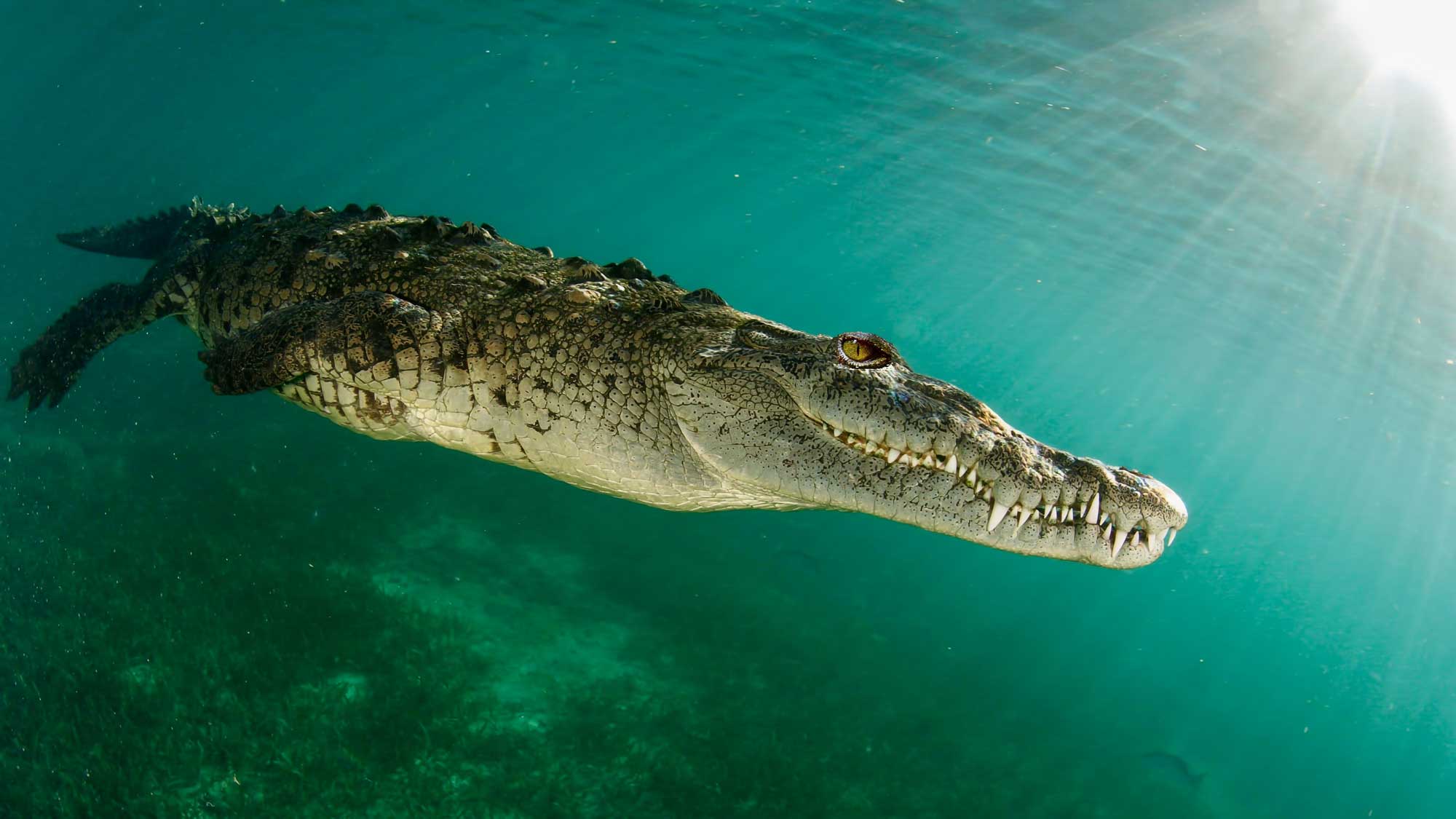Why in new?
The latest census reports the population of saltwater crocodiles in the Sundarbans, West Bengal, has shown steady growth.
The reports estimate a population between 220 and 242 individuals—up from 204 to 234 in the previous year.
About saltwater crocodile
- The saltwater crocodile (Crocodylus porosus), also called the estuarine crocodile, Indo-Pacific crocodile, or simply "saltie," is the largest living reptile and one of the world's most formidable predators.
- Adult males can grow up to 6–7m (20–23ft) in length and weigh as much as 1,000–1,500kg .
- Saltwater crocodiles are found in coastal regions from India's east coast across Southeast Asia, the Sundaland, northern Australia, and as far as Micronesia.
- They inhabit saltwater habitats, brackish wetlands, and freshwater rivers, displaying a unique ability to thrive in seawater through specialized salt glands found on their tongues.
Key features and facts about the saltwater crocodile:
- Largest living reptile and the most massive terrestrial predator.
- Known for their aggressive and territorial nature,.
- Exceptional swimmers, they can often move hundreds of kilometers along coastlines.
- Life expectancy can exceed 70 years.
- Their populations are listed as Least Concern on the IUCN Red List.
- Saltwater crocodiles are regarded as highly dangerous to humans due to their size, power, and unpredictable behaviors.
Major Conservation Challenges
Habitat Loss & Encroachment
- River bank encroachment, development, and agricultural expansion have reduced suitable basking, nesting, and foraging habitats.
- Degradation of mangrove and wetland ecosystems crucial for saltwater crocodiles remains a critical threat.
Human-Crocodile Conflict
- Increased crocodile populations, especially in areas like Bhitarkanika and the Sundarbans, has led to more frequent interactions with humans.
Poaching & Illegal Trade
- Crocodiles are targeted for their skin, meat, and alleged medicinal properties. Although once a major threat, poaching persists in some regions despite wildlife protection laws.
Habitat Degradation
- Pollution, alteration of river flows, and erosion continue to impact important crocodile habitats. Sustainable management of river systems and estuaries is required for long-term survival.
Conservation Actions
- Annual censuses and ongoing monitoring of populations.
- Barricades at river ghats to minimize human-crocodile interactions.
- Discontinuation of breeding programs in regions (e.g., Bhitarkanika) where population saturation is reached.
- Continued efforts in habitat protection, community engagement, public education, and enforcement of conservation laws are critical for the future success of saltwater crocodile conservation in India.
Download Pdf


Get in Touch




